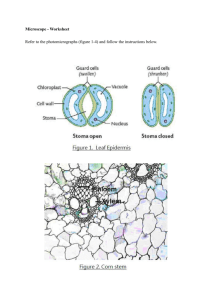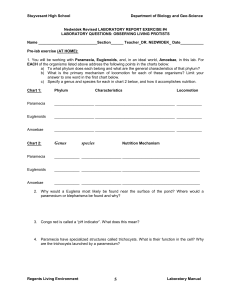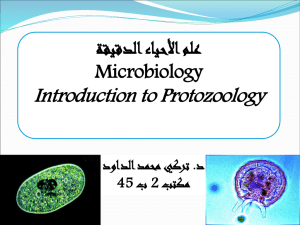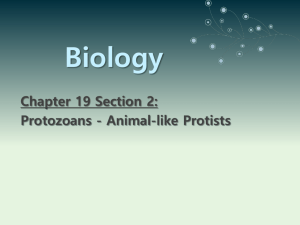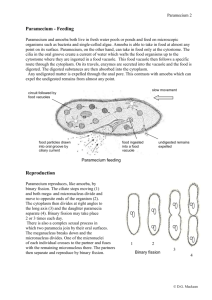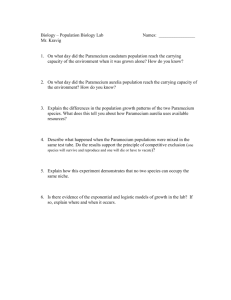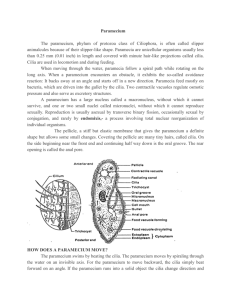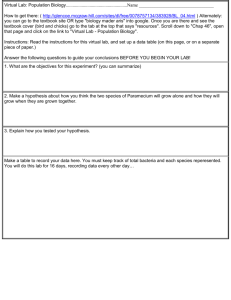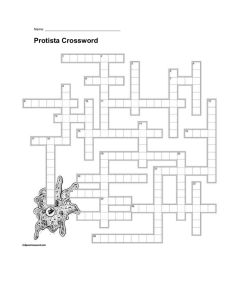Methanopyrus (Methanopyrus kandleri)
advertisement
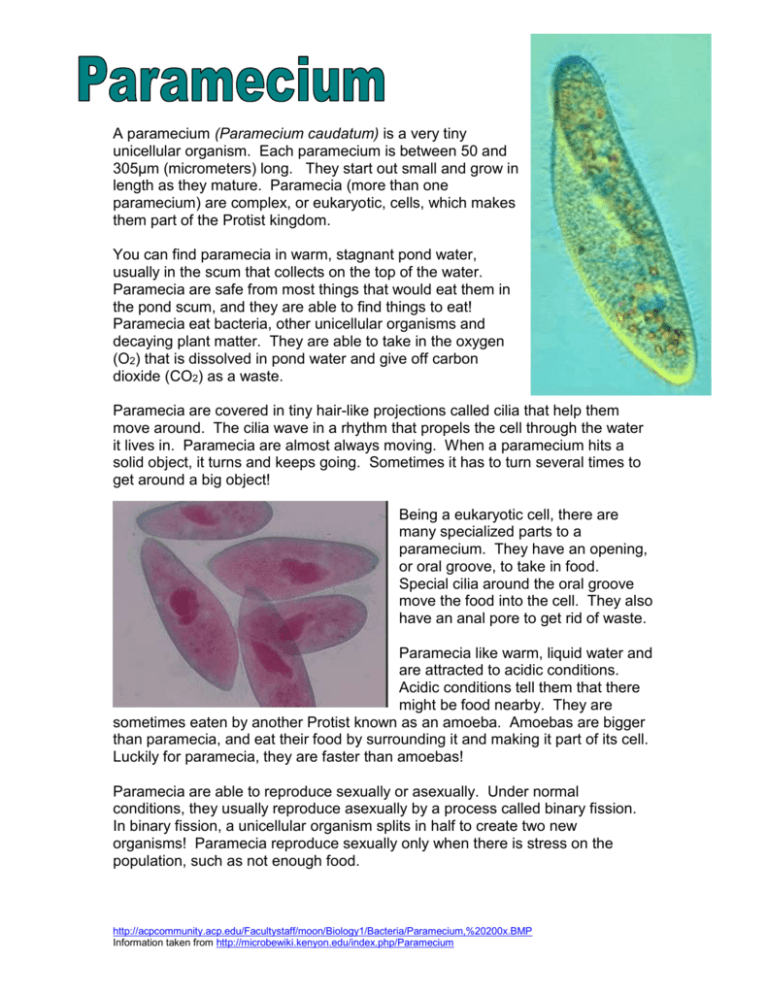
A paramecium (Paramecium caudatum) is a very tiny unicellular organism. Each paramecium is between 50 and 305μm (micrometers) long. They start out small and grow in length as they mature. Paramecia (more than one paramecium) are complex, or eukaryotic, cells, which makes them part of the Protist kingdom. You can find paramecia in warm, stagnant pond water, usually in the scum that collects on the top of the water. Paramecia are safe from most things that would eat them in the pond scum, and they are able to find things to eat! Paramecia eat bacteria, other unicellular organisms and decaying plant matter. They are able to take in the oxygen (O2) that is dissolved in pond water and give off carbon dioxide (CO2) as a waste. Paramecia are covered in tiny hair-like projections called cilia that help them move around. The cilia wave in a rhythm that propels the cell through the water it lives in. Paramecia are almost always moving. When a paramecium hits a solid object, it turns and keeps going. Sometimes it has to turn several times to get around a big object! Being a eukaryotic cell, there are many specialized parts to a paramecium. They have an opening, or oral groove, to take in food. Special cilia around the oral groove move the food into the cell. They also have an anal pore to get rid of waste. Paramecia like warm, liquid water and are attracted to acidic conditions. Acidic conditions tell them that there might be food nearby. They are sometimes eaten by another Protist known as an amoeba. Amoebas are bigger than paramecia, and eat their food by surrounding it and making it part of its cell. Luckily for paramecia, they are faster than amoebas! Paramecia are able to reproduce sexually or asexually. Under normal conditions, they usually reproduce asexually by a process called binary fission. In binary fission, a unicellular organism splits in half to create two new organisms! Paramecia reproduce sexually only when there is stress on the population, such as not enough food. http://acpcommunity.acp.edu/Facultystaff/moon/Biology1/Bacteria/Paramecium,%20200x.BMP Information taken from http://microbewiki.kenyon.edu/index.php/Paramecium

